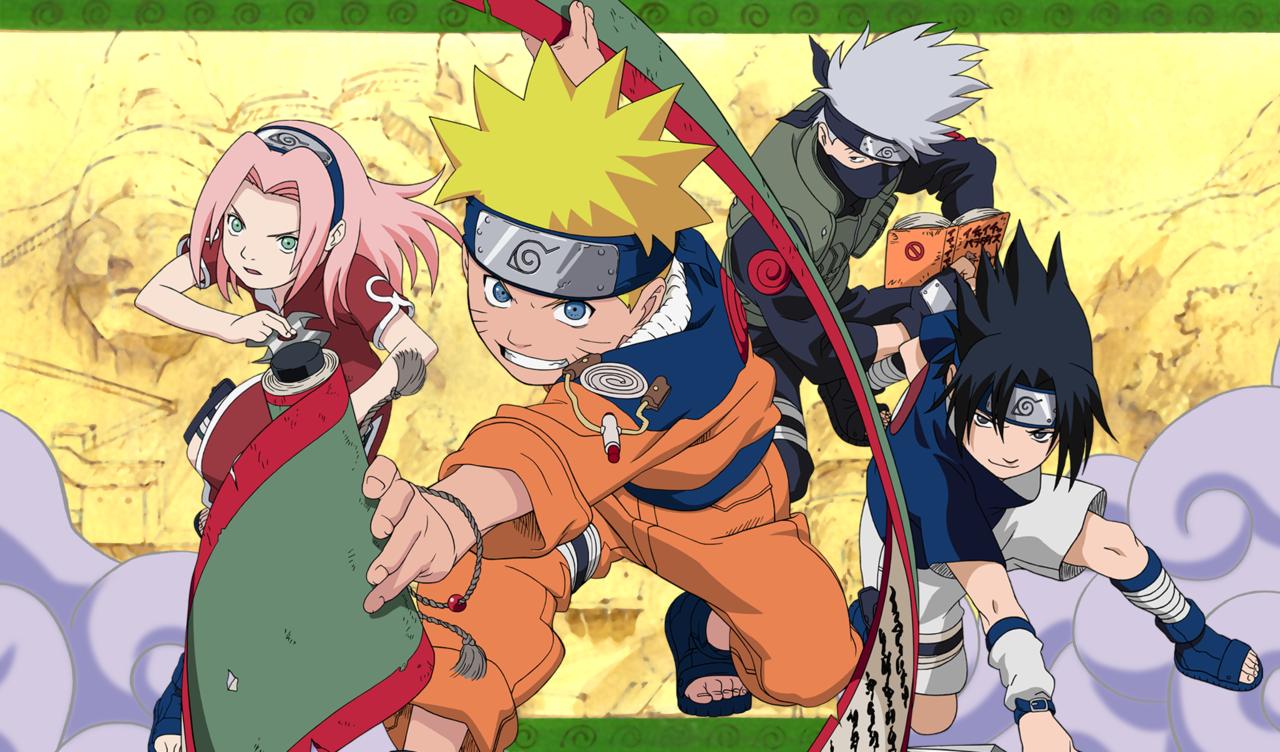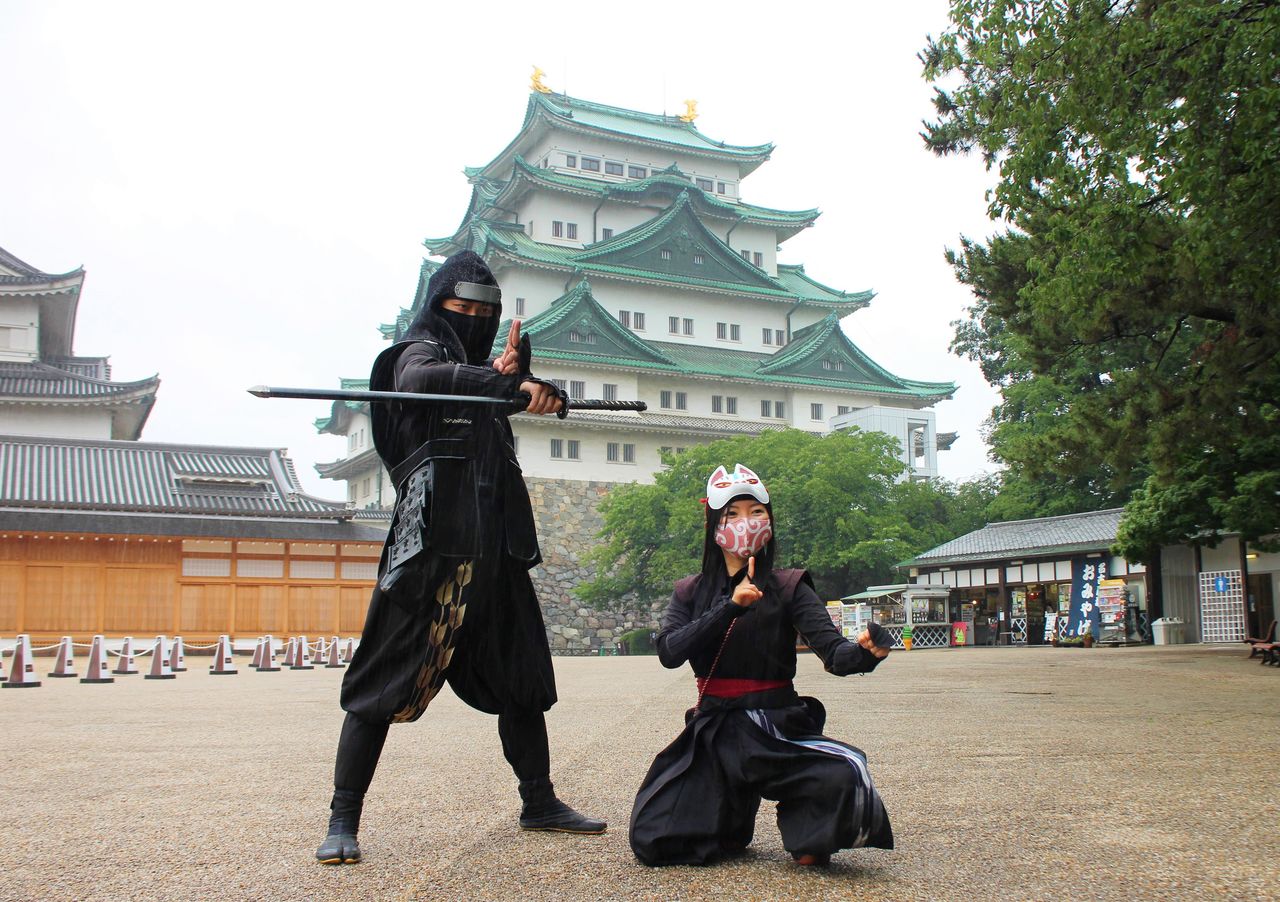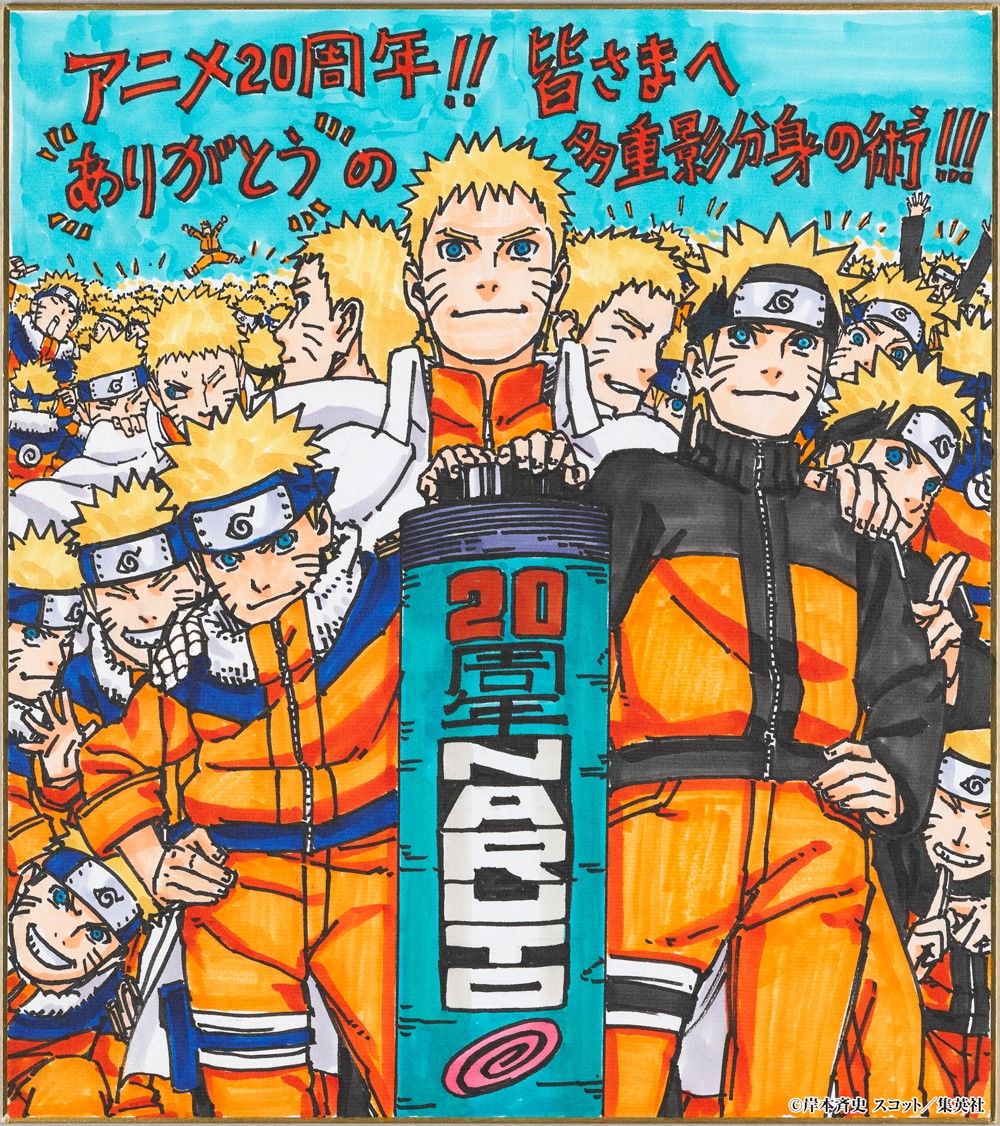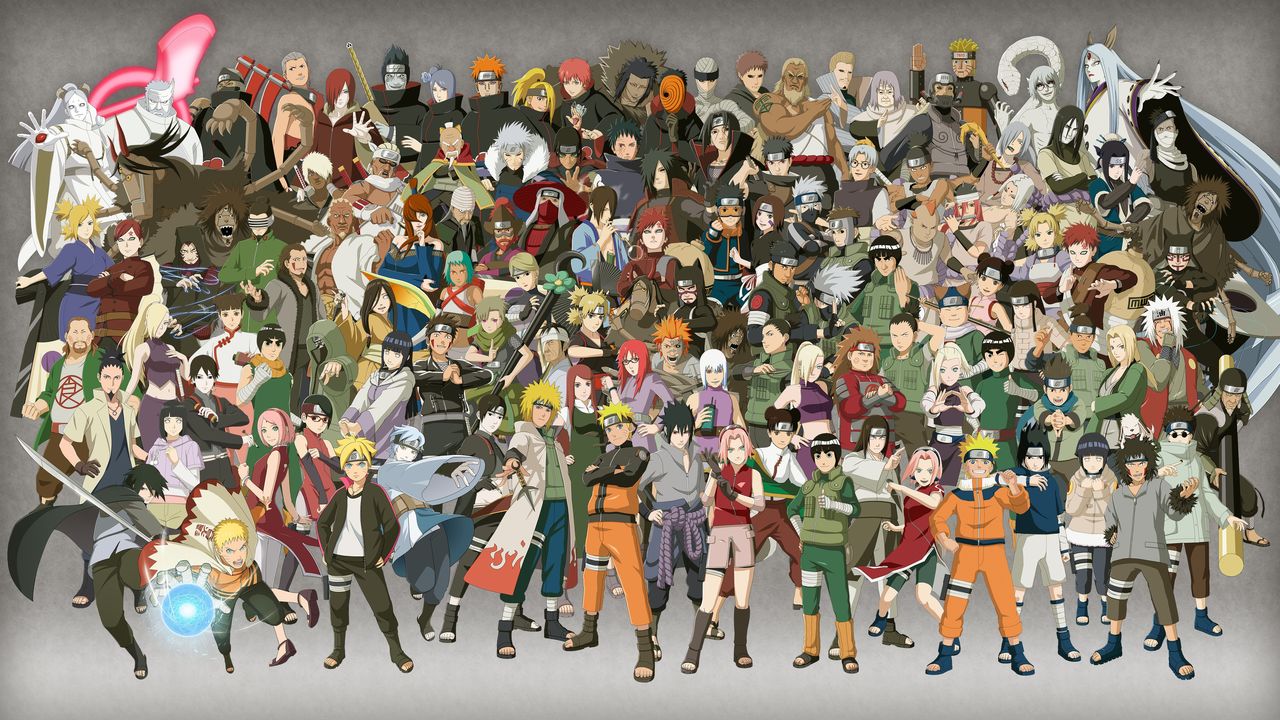A Popular Ninja Manga’s World
The manga series Naruto debuted in the weekly Shōnen Jump magazine in 1998. An animated television show aired in 2002 to great success, and to date the series has sold more than 250 million volumes in print globally, making it a beloved presence around the world.
Naruto is built around stories of ninja, including that of its protagonist, Uzumaki Naruto. It’s an original world with its own unique history and culture, invented by the manga artist Kishimoto Masashi.
The world of Naruto is divided into five major countries: the Land of Fire, the Land of Water, the Land of Earth, the Land of Wind, and the Land of Lightning. Each land is ruled by a noble called a daimyō to whom the ninja pledge their loyalty. The ninja select their own leaders, called kage, but these choices are subject to the final decisions of the daimyō. Even still, the relationship is one of equals. Requests from other lands may be accepted or refused based on the judgment of a kage. Naruto’s first major mission, in fact, is protecting a technician from another Land.
The historical image of ninja is of stoic practitioners of spycraft who dwell in the shadows or blend in among the populace to carry out secret missions. But the ninja of Naruto are flashy performers. However, in the words of Jiraiya, one of Naruto’s instructors:
“A ninja is someone who never gives up.”
So perhaps Naruto exemplifies the stoic ninja archetype after all.
 Three years after the debut of the manga, Naruto was adapted into an anime by Studio Pierrot in 2002. It, and the sequel Naruto: Shippūden, was broadcast on television until 2017. (© Kishimoto Masashi, Scott/Shūeisha, TV Tokyo, Pierrot)
Three years after the debut of the manga, Naruto was adapted into an anime by Studio Pierrot in 2002. It, and the sequel Naruto: Shippūden, was broadcast on television until 2017. (© Kishimoto Masashi, Scott/Shūeisha, TV Tokyo, Pierrot)
The Roots of the Ninja
As people who lived in the shadows, the ninja left few historical records. According to one theory, their roots extend back to ancient times, even as far as the seventh century. But their real heyday was in the medieval period, when they emerged as villains from the late thirteenth century onward, as explained in the Japan Ninja Council’s book, Ninja to wa (What is a Ninja?).
“Villain” here means an “irregular” samurai. “Regular” samurai served as retainers of the shōgun. Normally, samurai represented a linking of country lords and warrior clans with links to the imperial bloodline. The backbone of their system was an agricultural economy. The villains, meanwhile, arrived with the debut of a new economic order based on currency.
“Villain” sounds like an antisocial “bad guy,” but in modern slang, “bad” can have a cool image, too. Indeed, “antihero” might be a better term. Ninja didn’t just run wild: They also had a positive image as cunning, crafty adversaries.
In the early fourteenth century, Emperor Go-Daigo plotted to retake control of the nation from samurai clans. (To set the historical stage, this was the brink of the Hundred Years War in Europe, and when China was ruled by a foreign dynasty of Mongolian descent.) The villains/antiheroes were the first to pledge loyalty to him. Their guerrilla warfare threw the “regular” samurai into turmoil.
In the end, however, the status quo of the shōgun and his samurai triumphed. But the villains didn’t disappear. They maintained their independence in isolated regions throughout the countryside. Then Japan sank into the chaos of the period known as the Warring States period (1467-1568). Central authority collapsed; small warlords known as daimyō launched their own fiefdoms. When daimyō had a need for intelligence gathering or irregular military missions, they called upon the villains—whom we now know as ninja.
 Members of the “Tokugawa Ieyasu and Hattori Hanzō Ninja Squad” pose in front of Nagoya Castle. Ninja culture continues to thrive in modern Japan. (© Jiji)
Members of the “Tokugawa Ieyasu and Hattori Hanzō Ninja Squad” pose in front of Nagoya Castle. Ninja culture continues to thrive in modern Japan. (© Jiji)
Ninja as Superheroes
Folklore abounds with legends of ninja abilities. Superhuman strength and endurance. Martial arts prowess and survival tactics that make the impossible possible. Expertise with firearms and explosives (it’s said they even possessed landmines). Even rumors of harnessing sorcery and the supernatural.
Their missions involved gathering intelligence in rival fiefdoms and reporting on the status of ongoing military conflicts. Sometimes they were even employed to manipulate entire populations by sowing rumor and disinformation—in modern terms, influencing people by spreading fake news.
They are also said to have participated in sabotage and even assassinations. The truth of these stories is shrouded in the fog of history, but it is known that famed daimyō such as Takeda Shingen and Uesugi Kenshin died in mysterious circumstances. There have long been rumors that the ninja were involved in their untimely deaths.
In the world of Naruto ninja exist out in the open. Their missions can be as simple as searching for lost pets. But so too do they possess special teams who carry out secret missions shrouded in darkness. This much, at least, overlaps the reality of historical ninja.
In real life, it seems, ninja worked for more than simply financial reward. There is a book believed to have been written in the late seventeenth century called Mansen shūkai (Ten Thousand Rivers Forming an Ocean). It describes the ninja arts as being passed down in the family lines in the Kōga and Iga regions, which really exist—they are part of present-day Shiga and Mie Prefectures. These are considered something akin to holy ground for ninja.
“A true ninja is pure of heart,” goes one saying associated with the art.
Pure of heart here means being compassionate, just, loyal, and committed. The compassionate are empathetic. The just respect justice. As for the just, Naruto’s teacher, Hatake Kakashi, put it best: “To abandon your duty is not courageous. Below the courageous, there is nothing.” The loyal serve and respect their master. And the commitment is to one another. In Naruto, the trust among comrades is a deeply emphasized factor.
But loyalty doesn’t mean blind, robotic obedience. Following immoral orders is not courageous. For instance, Uchiha Itachi agonizes greatly before making his decision to follow orders to assassinate his entire clan.
 On October 3, 2022, Kishimoto Masashi released this illustration to commemorate the twentieth anniversary of the debut of the anime series. (© Kishimoto Masashi, Scott/Shūeisha)
On October 3, 2022, Kishimoto Masashi released this illustration to commemorate the twentieth anniversary of the debut of the anime series. (© Kishimoto Masashi, Scott/Shūeisha)
The Naruto Vision of Evil and Good
In the real world, it is often difficult to differentiate between what is good and what is evil, and the true from the fake.
The world of Naruto is similar. A great war created a measure of stability among the great countries of the land. However, achieving stability meant crushing the rights of many smaller countries. Many conflicts remained among the bloodlines of the villages in this world.
While the realm appeared stable, in reality a society of ninja plotted for their villages to secede. In order to prevent this, the leaders of the villages forged an alliance across borders. But these efforts masked another, larger intrigue playing out against the backdrop of ninja history.
Mistrust, mistakes, and schemes snowball from misunderstandings into significant tragedies, triggering a chain reaction of hatred. Some people take a hard line; others are more moderate. Some commit terrorism in the name of justice. Others immerse themselves in getting personal revenge.
Mistrust and hatred promote conflict. Naruto skillfully portrays how the seeds of tragedy cause chaos long after they were first sown. However, just as darkness begets darkness, so too can the light of trust shine like a beacon across the generations.
The protagonist, Uzumaki Naruto, is a ninja of the Konohagakure village of the Land of Fire. Although initially an underachiever in the Ninja Academy, he possesses great inner strength in the form of a nine-tailed fox spirit sealed within him. This is only known to the village elders, who do little to hide their suspicion, resulting in a very lonely childhood for the boy.
No one truly sees Naruto for who he really is. So he aspires to become the village’s leader, a hokage—the kage of the Land of Fire—and what is more, the greatest hokage in history, all of it driven by his desire to make the people of the village acknowledge his existence.
The fox-spirit within him has already destroyed the village and killed many people before. And nobody knows what might release it from within Naruto. Given all the distrust directed at him, it would have been no surprise if Naruto sank into darkness.
 The fighting game Naruto-Boruto Ultimate Storm Connections, which commemorates the twentieth anniversary of the anime, is scheduled to launch on PlayStation, Nintendo Switch, and Xbox in 2023. (© Kishimoto Masashi, Scott /Shūeisha, TV Tokyo, Pierrot; © Naruto Movie Production Committee 2012; © Naruto Movie Production Committee 2014; © Boruto Movie Production Committee 2015; © Bandai Namco Entertainment Inc.)
The fighting game Naruto-Boruto Ultimate Storm Connections, which commemorates the twentieth anniversary of the anime, is scheduled to launch on PlayStation, Nintendo Switch, and Xbox in 2023. (© Kishimoto Masashi, Scott /Shūeisha, TV Tokyo, Pierrot; © Naruto Movie Production Committee 2012; © Naruto Movie Production Committee 2014; © Boruto Movie Production Committee 2015; © Bandai Namco Entertainment Inc.)
But Naruto is blessed with upbeat teachers such as Umino Iruka, Hatake Kakashi, and Jiraiya. He is helped by the ninja of other villages, and even a toad. He is guided by the trust his teachers and friends place in him, a trust that goes beyond blood ties and affiliations, transforming him into someone capable of dialogue and forgiveness, even for the one who killed his own teacher.
Everyone sees the world from their own perspective. Even those who appear immoral to us may have a very different point of view of their behavior. Only dialog and acceptance can break the chain of hatred. The only way to cultivate a brighter future is by leaving hope to the next generation.
Such is the answer Naruto delivered after fifteen years. Or put another way, it took 15 years and 700 episodes to come to that conclusion. And along the way, it created a world that continues to resonate in people’s hearts, around the world.
(Originally published in Japanese. Banner photo: Naruto was serialized in the weekly Shōnen Jump magazine from 1999 to 2014 over 700 chapters, which were collected into 72 volumes. A sequel focusing on Naruto’s son, Boruto: Naruto Next Generations, ran from 2016 to 2019. Both were adapted into anime series. Photo © Nippon.com.)


